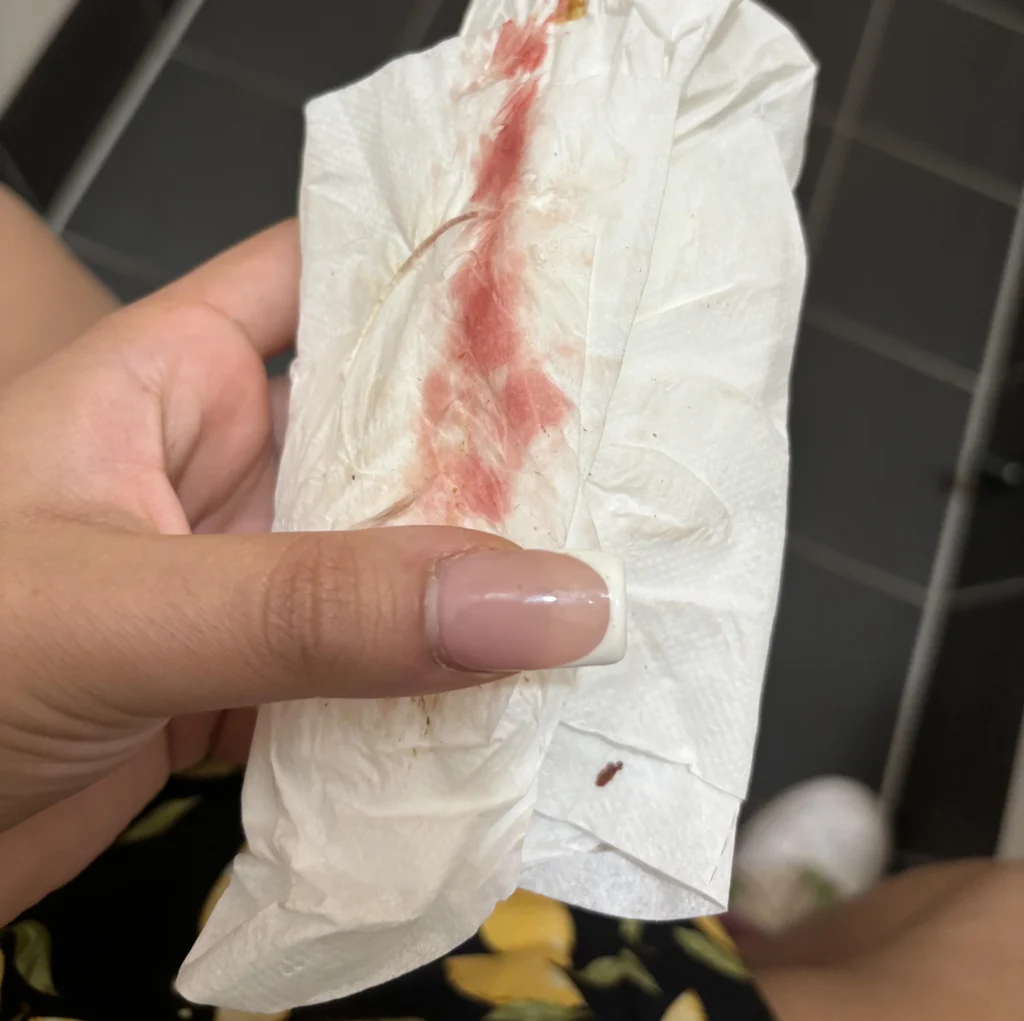Brown spotting before period can be confusing and sometimes even a little worrying. While many women experience this at some point in their cycle, the causes can vary widely from harmless hormonal changes to conditions that may need medical attention. Understanding why spotting happens, what it means, and when it’s worth a doctor’s visit can help ease anxiety and give you better control over your reproductive health.
In this blog, we’ll explore the common reasons behind brown spotting, when it might signal pregnancy or an underlying condition, and the situations where seeking medical advice is important.
Understanding Brown Spotting

Brown spotting refers to light vaginal bleeding that appears brown rather than the typical red color of menstrual blood. This usually happens because the blood has taken longer to exit the uterus, giving it time to oxidize and turn brown. Unlike a regular period, spotting is lighter, may last only a day or two, and often shows up as streaks or smears rather than a steady flow.
Recommended: Spotting vs. Your Period: How to Tell the Difference
For many women, brown spotting before a period is normal and not a cause for concern. It’s often linked to old blood leaving the body, hormonal changes, or ovulation. However, when accompanied by pain, unusual discharge, or happening frequently, it could signal an underlying issue that needs attention.
Common Causes of Brown Spotting Before Period
Brown spotting before your period can happen for several reasons, many of which are harmless. Some of the most common include:
1. Old blood leaving the uterus: Sometimes your body sheds leftover blood from the previous cycle. Because it’s older, it turns brown by the time it leaves the body.
2. Hormonal fluctuations: Changes in estrogen and progesterone levels can affect your cycle. When hormone balance is slightly off, it can lead to light spotting before your actual period starts.
3. Ovulation spotting: Some women experience light spotting around ovulation, usually in the middle of their cycle. This can sometimes appear as brown discharge if the blood takes longer to pass.
4. Birth control effects: Starting, stopping, or missing birth control pills can trigger spotting. Hormonal IUDs, implants, or patches may also cause light brown bleeding between periods.
5. Stress and lifestyle factors: High stress, poor sleep, or sudden changes in diet and exercise can affect your hormones, sometimes leading to spotting before menstruation.
Recommended: Is Spotting a Sign of Early Pregnancy or Miscarriage?
6. Early pregnancy (implantation bleeding): Brown spotting can sometimes be an early sign of pregnancy, caused by the fertilized egg attaching to the uterine lining.
7. Perimenopause: As women approach menopause, hormonal changes may cause irregular cycles and spotting between periods.
8. Infections: Bacterial vaginosis, yeast infections, or sexually transmitted infections (STIs) may cause irritation, leading to brown spotting along with unusual discharge or odor.
9. Uterine conditions: Fibroids, polyps, or endometriosis can cause abnormal bleeding or spotting before and after periods.
10. Certain medications: Drugs that affect hormones or blood clotting, including some fertility treatments, may trigger spotting.
Possible Medical Conditions Linked to Brown Spotting
While brown spotting before your period is often harmless, it can sometimes be linked to underlying medical conditions that affect the reproductive system. These may include:
1. Polycystic Ovary Syndrome (PCOS)
PCOS causes hormonal imbalances that can disrupt ovulation. This often leads to irregular periods, light spotting, or brown discharge between cycles.
2. Endometriosis

A condition where tissue similar to the uterine lining grows outside the uterus. It can cause painful periods, heavy bleeding, and spotting before or after menstruation.
Recommended: 10 Causes of Spotting During Ovulation
3. Uterine Fibroids or Polyps
These are noncancerous growths in the uterus that may cause irregular bleeding, spotting, pelvic pain, or heavier-than-normal periods.
4. Pelvic Inflammatory Disease (PID)
An infection of the reproductive organs, often caused by untreated STIs. PID can cause spotting, unusual discharge, abdominal pain, and fever.
5. Cervical or Uterine Changes
Conditions such as cervical ectropion (when cells from inside the cervix grow on the outside) or, rarely, cervical or uterine cancer may cause irregular bleeding or spotting.
6. Thyroid Disorders
Both hypothyroidism and hyperthyroidism can disrupt hormonal balance, sometimes leading to spotting before menstruation.
Is Brown Spotting Before Period Normal?
Brown spotting before a period is often considered normal and usually nothing to worry about. It commonly occurs when older blood takes longer to leave the uterus, which makes it appear brown instead of bright red. Hormonal changes before menstruation can also trigger light spotting, and some people may notice it around ovulation or as a side effect of birth control. In most cases, if the spotting is light and happens close to the expected period, it is simply part of the menstrual cycle.
However, brown spotting can sometimes point to an underlying issue if it occurs often or comes with other symptoms. Conditions such as fibroids, polycystic ovary syndrome, or infections may cause unusual spotting. If the spotting is heavy, happens far from your normal cycle, or is accompanied by pain, discomfort, or an unusual odor, it is best to speak with a healthcare professional. Paying attention to changes in your cycle can help you understand what is normal for your body and when to seek medical advice.
Recommended: Is Light Spotting Normal for Perimenopause?
Effective Ways to Manage Brown Spotting
If you experience brown spotting, there are several simple ways to manage it and reduce any discomfort while also keeping track of your reproductive health. In many cases, lifestyle habits and self-care can make a big difference, but it is also important to know when medical guidance may be needed.
- Track your cycle by using a journal or a period tracking app so you can identify patterns and understand when spotting is likely to occur.
- Maintain a balanced diet filled with fruits, vegetables, lean proteins, and whole grains, since proper nutrition helps regulate hormones that influence your cycle.

- Exercise regularly with activities like walking, yoga, or light workouts, because physical activity improves circulation and helps reduce stress that may trigger spotting.
- Manage stress effectively by practicing meditation, deep breathing, or yoga, since high stress levels can disrupt hormonal balance and lead to irregular bleeding.
Recommended: Can the Copper IUD Cause Bad Body Odour or a Metallic Smell?
- Stay hydrated by drinking enough water throughout the day, as hydration supports overall body function, including reproductive health.
- Use panty liners during spotting to stay comfortable and hygienic, while also making it easier to monitor the flow and duration of the spotting.
- Limit caffeine and alcohol intake if you notice frequent spotting, because both can affect hormonal balance and may worsen cycle irregularities.
- Consult a doctor if the spotting becomes heavy, persistent, painful, or is accompanied by unusual odor or other symptoms, since this may point to an underlying condition that requires treatment.
Conclusion
Brown spotting before a period is usually harmless and often just a natural part of the menstrual cycle, especially when it happens occasionally and without other symptoms. Still, it is important to pay attention to your body and notice any changes in your cycle. Simple lifestyle habits like eating well, exercising, and managing stress can help keep your hormones balanced and reduce irregular spotting.
If the spotting becomes frequent, heavy, or comes with discomfort, it is always best to seek medical advice to rule out underlying conditions. By staying mindful of your health and addressing concerns early, you can manage spotting more effectively and maintain better overall reproductive well-being.
